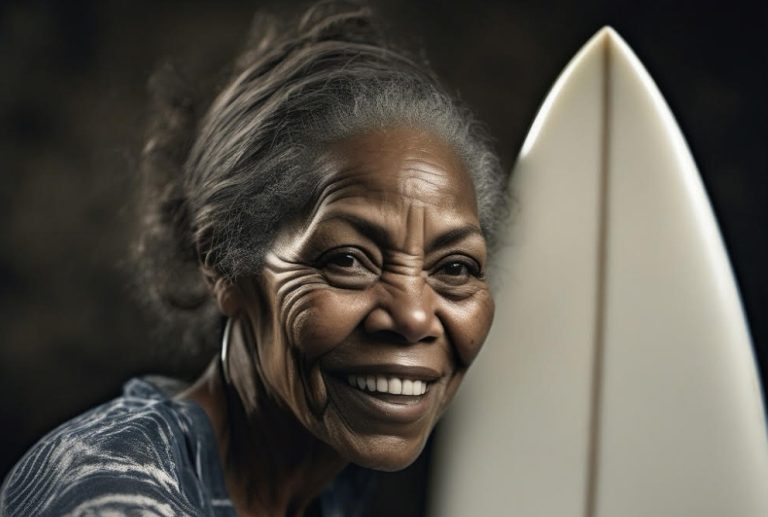Camille Ross is an American photographer who explores the intersections of race, identity, and empowerment through her work. Born in 1964 in San Francisco, California, she grew up in two starkly contrasting environments: the radical landscape of Berkeley during the 1970s and the rural landscapes of Mississippi. This blend of progressive ideals and deeply ingrained cultural segregation has profoundly influenced her perspective and artistic expression.

Raised in a biracial family with Cherokee ancestry, Ross’s experiences with cultural segregation shaped her understanding of society. These experiences are reflected in her photography, which serves as a commentary on marginalized lives and the impact of systemic racism. Her work challenges viewers to see beyond the stereotypes and recognize the strength, resilience, and beauty inherent in those often marginalized by society.
One of Ross’s most important projects, The Women, is a series that focuses on the systemic oppression of women, particularly Native American and African American women. The series seeks to reframe these women not as victims but as empowered individuals in positions of freedom and joy. Ross portrays them in scenarios typically associated with privilege and success, such as surfing, sailing, archery, and even skiing in the Alps.

In The Women, Ross deliberately places these women in contexts that defy historical and cultural stereotypes. She critiques the narratives that have traditionally portrayed them as impoverished, uneducated, and lacking agency. By doing so, she challenges the viewer to reconsider preconceived notions and recognize the strength and dignity of these women.
The project aims to disrupt the ingrained perceptions of African American and Native American women as disadvantaged and aimless. Ross highlights the irony in how society has often viewed these women through a lens of poverty and lack, while in reality, they have demonstrated remarkable resilience and strength. Her work underscores the fact that these women, often heads of their households and deeply committed to their families and communities, are the backbone of their societies.
Through her images, Ross confronts the stereotypes that have been imposed upon these women, illustrating how they have been misrepresented through a white, male-dominated lens. She emphasizes that these women are not only strong and capable but are also deeply engaged with their communities, careers, and cultural identities. Her art is a tribute to their resilience and a call to action for society to recognize their true worth.
In addition to addressing issues of race and gender, Ross’s work also tackles ageism. In The Women, she depicts older women of color as vibrant, joyful, and engaged in activities typically reserved for younger or more privileged demographics. By showcasing these women in their 70s enjoying leisure activities and embracing life, Ross challenges societal norms that often render older women invisible.
Ross’s decision to depict women of this age group is a conscious choice to highlight the beauty and wisdom that comes with age. She aims to dispel the notion that aging diminishes a woman’s value or relevance. Instead, her work celebrates the accomplishments and personal growth of these women, showing them as empowered individuals who continue to make significant contributions to society.
Ross’s series incorporates elements of irony and historical references, particularly in pieces like The Archers. Here, she portrays women as warriors, fighting back against the historical injustices they have faced. The imagery is rich with symbolism, often referencing Native American war heroes like Pretty Nose and Buffalo Robe Woman, who played pivotal roles in historical battles such as the Battle of Little Bighorn.
By placing these women in positions of authority, Ross uses irony to critique the systemic oppression they have faced. Her work suggests that these women have always been warriors, fighting not only for their survival but for their dignity and recognition in a world that has often marginalized them.
Ross’s approach to art includes the use of AI to create her images. By blending traditional photography with AI applications, she has reimagined her subjects in settings that defy traditional narratives. This use of technology allows her to explore new dimensions of representation and storytelling, offering a fresh perspective on the lives and experiences of marginalized women.
In The First Supreme Court Judges, Ross imagines Native American women as empowered judges, donning traditional war paint and black robes. This portrayal serves as a critique of the current political landscape, highlighting the need for diverse voices and perspectives in positions of authority. Her work challenges the status quo and calls for a more inclusive and equitable society.
Ross’s work is not only a celebration of women but also a critique of societal issues like misogyny, racism, and ageism. She draws inspiration from the writings of feminist authors like Andrea Dworkin, using their ideas as a framework for her commentary on contemporary culture. Her art serves as a reminder of the ongoing struggles women face and the importance of challenging oppressive systems.
Through her photography, Ross addresses the epidemic of missing and murdered Indigenous women and children, shedding light on the violence and neglect faced by Native American communities. Her work serves as a call to action, urging society to confront these issues and work towards a more just and compassionate world.
Camille Ross’s photography is a testament to her commitment to social justice and empowerment. Her work challenges stereotypes, celebrates diversity, and calls for change. Through her art, she invites viewers to see the world through a different lens, one that acknowledges the strength and resilience of marginalized communities.
Ross’s work is a reminder that art has the power to inspire change and promote understanding. By reimagining the narratives surrounding African American and Native American women, she offers a vision of empowerment and hope. Her art is a celebration of their lives and a tribute to their enduring strength and resilience in the face of adversity.

